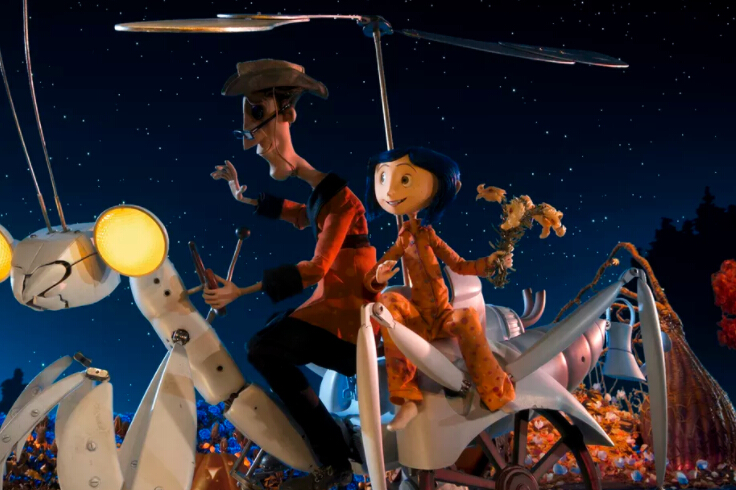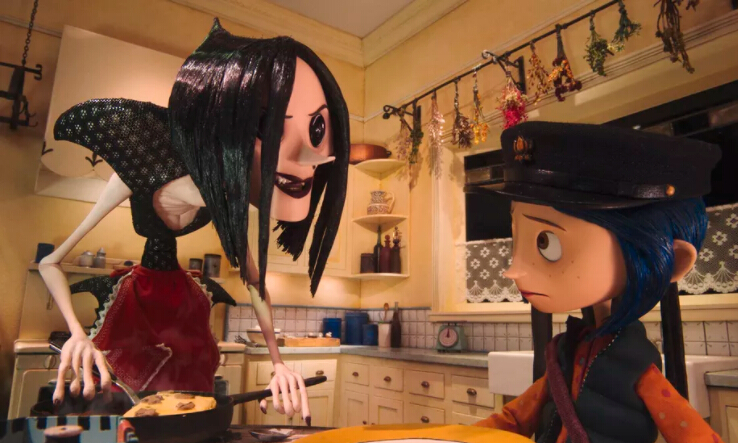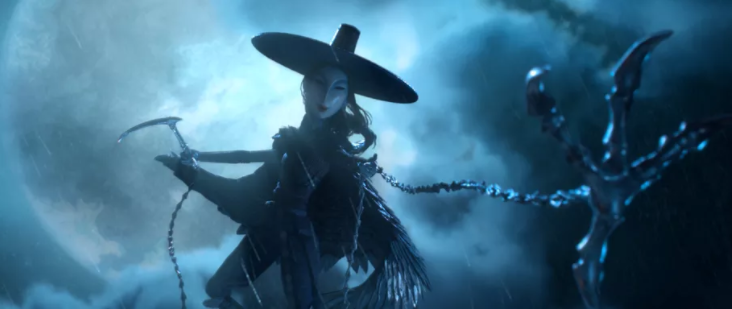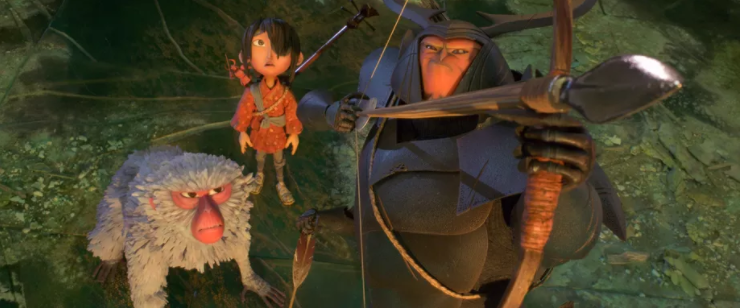How a Stop-Motion Costume Designer Makes Tiny Clothing for the Big Screen
Whether they’re making spot-on ’80s period clothing or producing hundreds of detailed, Afrofuturistic outfits, costume designers regularly pull off staggering creative feats. But Deborah Cook’s job is uniquely challenging. As head of the 25-person costume department at Laika, the Oregon-based stop-motion studio behind movies like Coraline, ParaNorman, and Kubo and the Two Strings, Cook makes clothing for characters no taller than a pencil.

Crafting miniature clothing is one thing, but engineering tiny costumes for character models that need to crouch, sit, and run frame by frame — costumes that will then be blown up on a movie theater screen, showcasing all of their details and flaws — is another skill set entirely. Making a yellow rain slicker for Coraline isn’t as simple as sewing an extra-extra-small coat; it’s also about rigging the garment with wires and weights to ensure that it hangs realistically on the puppet’s twig-like frame.
Because I don’t understand how anyone can make inch-long gloves or minuscule boots, I rang up Cook to learn about the time-intensive (albeit fabric-minimal) process of making costumes for the littlest movie stars.
To begin, how did you land at Laika?
I’ve been at Laika for around 12 years now. I came out here to work on Coraline and set up the costume department for Laika. I only intended to stay for three months, but I got addicted and couldn’t go home. I usually work on two to three of our films at a time, with one doing publicity, one shooting, and doing research and establishing all the characters’ personalities for the new one.
I went to art school at Central St. Martins in London. I studied sculpture, but a lot of my work was driven by fabric. During college, people approached me from the stop-frame world because of the level of detail I was working in. I could work with different materials, from armatures [the jointed metal skeletons that let characters move realistically] to sculpture, wigs, and costumes.
There weren’t that many stop-frame animation courses for people to do, and if there are now, they’re mainly geared toward educating animators, rather than all the other things that come into play in stop frame. [Doing stop-motion costumes] is not anything you can train for. A lot of people we hire have transferable skills.

What kinds of skills translate well to doing costumes for the figures used in stop-motion movies?
We have people who have been ceramicists or jewelers — jewelers lend themselves well to armature, and ceramicists can make 3D shapes with their hands and understand all aspects of a form, plus they work with pigments and make their own colors. Everything here is hand-dyed. Even though they might not have worked with fabrics, if you teach them pattern cutting, they can work with puppets.
Everyone brings something new to the table. We’re a melting pot of skills, and we have our own look. It’s detail-driven and beautiful to look at — very striking visually — and finding people with those transferable skills has empowered that appearance.
What does the process of creating miniature costumes look like?
I work from the outset with the director and character designer. Initially, I’ll break down the script. I read it as a story first; then I go through it and separate out each character and each listed costume, trait, and description and put it all under their character headings. Break it down.
Then I list the items I’m looking for that help imbue character with personality. We’ll make huge mood boards — I have a big workspace with all the boards set up — and massive spreadsheets. You start to build the personality of the character and narrative: how it will change over the course of the film, who they’re seen with, and how that informs the story at that moment. If they become more upbeat or confident, or if they’ve literally been brawling and need to be roughed up, or they’re having a celebration, it commands a costume change. We work all of that out at the beginning, then work toward their costume. It’s a lot of research and legwork initially.
Then we go into color scripting, how the palette will pass through the whole thing. Color and texture have so much power and so much language that people warm to. I think our films are fairly tactile-looking. To me, anyway, it looks like you could crawl into the world because the materials are familiar. They’re not just drawn; they’re made and built. You can touch the fabric of the costumes; you can run your hands through foliage of forest.
What’s your starting point when making clothes for characters that small? A lot of them have these skinny little legs, like Coraline and Kubo — like, how do you make a pair of pants for them?

With our costumes generally, we look for particular properties in the material. We basically don’t use off-the-shelf fabrics. We’re using fabrics as a background to provide a structure that we can build surfaces on. You look for fabrics that have a little stretch in all directions, a little tooth on the surface because that keys the light — it gives the lighting technicians something to work with.
Sometimes we use the same fabrics across films. We hoard them and bring them back because they’ve served us so well. We can make them look totally different, but we know they have the durability we need over two and a half years of shooting and maybe two and a half years of development before that. And after that, our puppets have their own life where they do publicity events and press calls and travel the world and are handled by many more people for years to come. Durability is colossal. It’s way more important than with human clothes.

If we want something to look like jeans, we’ll look for a base fabric that would pass for denim in our scale. We work in one-to-six [model-to-real-life] scale. If you have a regular human-size piece of denim, it’ll hide the subtleties of their leg shape because it’s too heavy and big. The [figures’] joints are delicate, so the fabric has to be lightweight. If it’s too heavy, the puppet might move out of position.
The fabric is extremely lightweight, with backings or wires that help the armature support the costume. It’s a collaboration with [the team] building our puppets. We need to meet in the middle. We don’t just do our work and pass it off. If we know what the puppet will be wearing at the outset, we can build the puppet underneath so that there are no wonky moves.
If you think of something that’s the height of a pencil, which is the height of one of our characters, even the thinnest fabric won’t look like it has the right weight and gravity. So you need to make it super heavy on the bottom of the hems so it looks right for the scale.